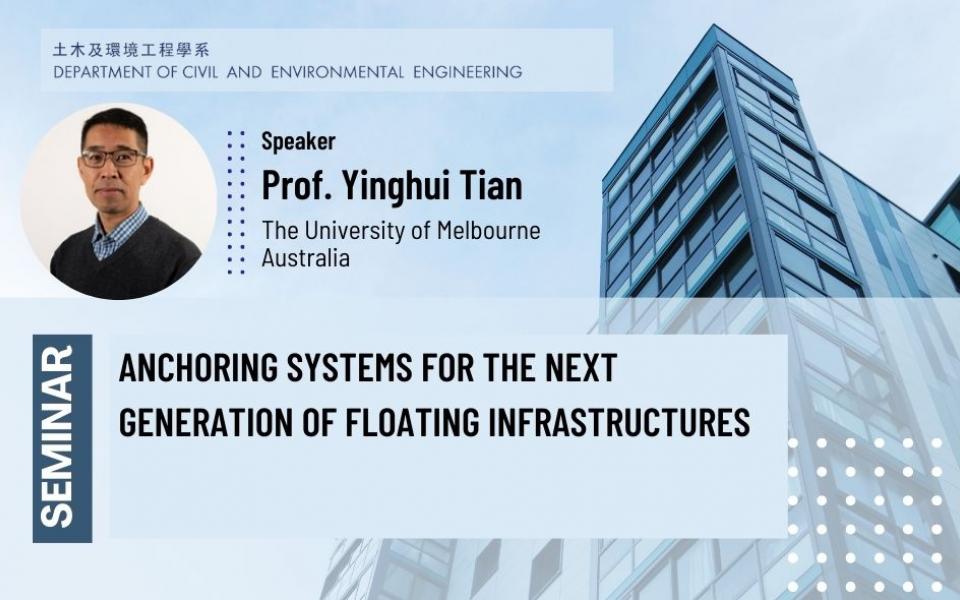Civil Engineering Departmental Seminar - Anchoring Systems for the Next Generation of Floating Infrastructures
Supporting the below United Nations Sustainable Development Goals:支持以下聯合國可持續發展目標:支持以下联合国可持续发展目标:
Anchoring Systems for the Next Generation of Floating Infrastructures
As the world’s population continues to grow (estimated to reach 9.8 billion by 2050), new sources of energy and novel long-distance transport routes are being sought from the ocean. The next generation infrastructure will not be fixed like a traditional oil and gas platform or bridge, with structure from the surface to the seabed, but will be floating on (or even below) the wave surface and stabilised in position by a series of long chains and large anchors.
This seminar reviews the speaker’s research work in studying the geotechnical behaviour of anchoring systems for the next generation of floating infrastructures, including (a) Floating Liquefied Natural Gas (FLNG) that produce, liquefy, store and transfer LNG; (b) floating wind turbines with challenges to economically and efficiently moor them in water depths >50m, and (c) submerged floating tunnels that by adjusting their buoyancy are suspended in water and offer an alternative to bridges or underground.
Dr Yinghui Tian is an ARC (Australian Research Council) Future Fellow, working at the Department of Infrastructure Engineering of the University of Melbourne. Prior to his appointment at Melbourne, he had worked at the Centre for Offshore Foundation Systems (COFS) of the University of Western Australia. His research background is offshore geotechnics and he is currently concentrating on doing research in offshore anchoring systems and renewable energies supported by the ARC Future Fellowship.
He is the recipient of the Institution of Civil Engineers (ICE) David Hislop Award for the best paper on offshore engineering in 2017. He has produced a total of 181 publications (98 journal papers, 54 conference papers, 3 book chapters, 25 technical reports for industry projects, excluding ~30 journal papers published in Chinese).
